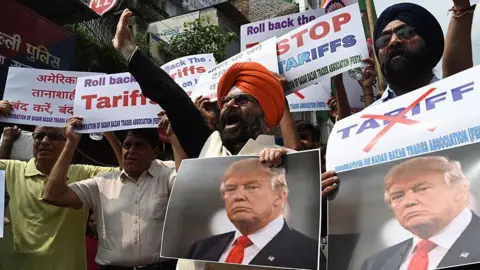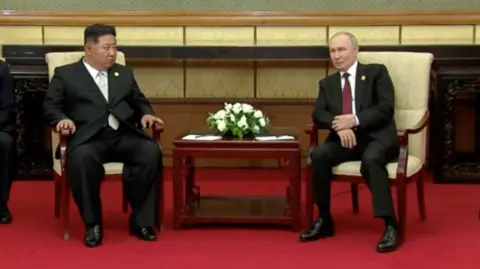From Saturday onwards, a sweeping 10% "baseline" tariff will impact all goods imported into the US. This decision, announced by Donald Trump, also imposes even higher rates on select nations identified as "worst offenders" in trade practices. Our team is addressing subscriber queries regarding the repercussions of these tariffs and how they may shape future market scenarios.
An important question raised by Mike Heafield in Preston concerns the fate of U.S.-made products manufactured in China, like the iPhone. Following the tariffs announcement, Apple has seen a decline in its share price by 7%. With substantial manufacturing operations in countries most affected by Trump's trade policies—China facing a 54% tariff and Vietnam a 46% tariff—Apple may struggle unless it secures exemptions. A report from Citi suggests that, without such exemptions, Apple could see a 9% hit to its overall gross margin due to these tariffs.
The impact on U.S. consumers is another pressing concern. Paul Miller from Devon inquired about how tariffs would affect American shoppers. Economists predict that consumers could bear a significant burden from increased prices and limited choices, even as producers pivot towards new markets for better opportunities. Historical context illustrates that during prior tariffs, nations like Vietnam have capitalized, potentially shifting the global trade landscape again—paving the way for intensified competition, especially for U.K. consumers.
Jock Scott from Nuneaton questioned how these tariffs might influence the UK's cost of living. The uncertainty surrounding the tariffs suggests a mixed bag of outcomes: while U.S. companies will initially absorb the costs, a strong dollar against weaker currencies could inflate prices for U.K. goods. If the U.K. were to implement retaliatory tariffs, domestic prices might also rise. However, some economists speculate that the influx of goods redirected from the U.S. market could provide cost advantages for U.K. consumers.
Inquiries from subscribers like Robert Jones in Cardiff about pension investments reveal immediate market reactions, casting a shadow on the long-term impacts of Trump’s tariffs. Experts advise against rash financial decisions and emphasize the importance of maintaining a long-term view in investments, especially for those nearing retirement.
Lastly, Paul Naldrett from Windsor raises the potential advantages of the U.K.’s Brexit position amid these tariffs. As the U.K. incurs only a 10% tariff in contrast to the 20% faced by EU nations, there may be a commercial edge for British exporters, while concerns loom about an influx of lower-standard products affecting local industries.
As the nuances of these tariffs unfold, they herald possible shifts in consumer behavior, market strategies, and international trade relations.






















